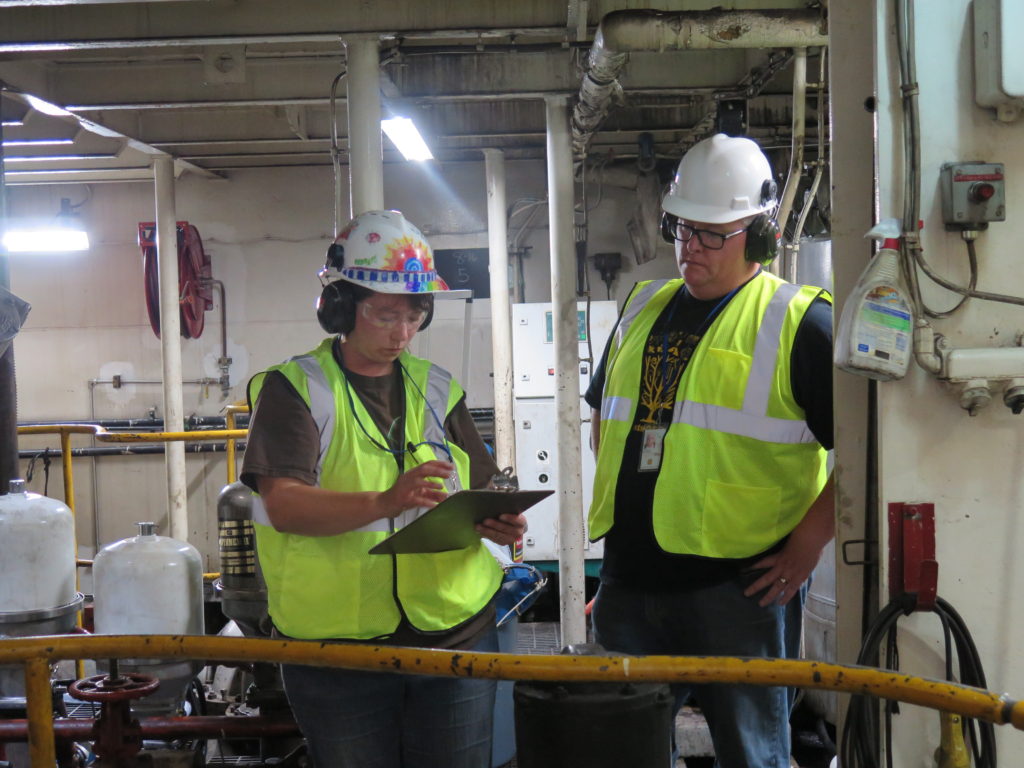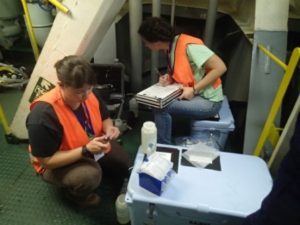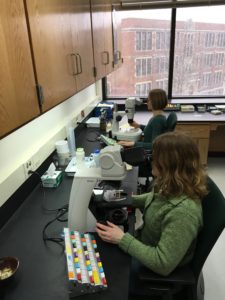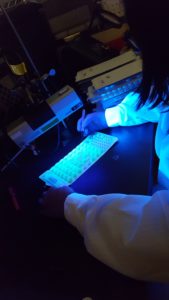Collaborative Team
The GWRC comprises experienced researchers with diverse expertise from the LSRI, the University of Minnesota Duluth’s Natural Resources Research Institute, and AMI Consulting Engineers to deliver a comprehensive research capacity for maritime-related environmental research services. The GWRC team bring more than 15 years of experience working together on ballast water research within the Great Ships Initiative, created by the Northeast-Midwest Institute (NEMWI). The GWRC team, including Ms. Allegra Cangelosi as PI, is building on its experiences now under the auspices of the LSRI.
“The LSRI is pleased to be part of GWRC, a truly collaborative project, which conducts research that can be applied to solve problems and improve health, quality of life, the environment for all citizens within the Great Lakes region and beyond,” said Dr. Matthew TenEyck, Director of the LSRI. “This applied research approach directed at green shipping is consistent with LSRI’s mission, and a great fit.”
“The GWRC will also provide non-traditional learning and applied research opportunities for undergraduate students,” said UW-Superior Chancellor Renée Wachter.
“We are excited to continue our objective performance evaluations of technologies and policies designed to protect Great Waters such as the Great Lakes,” Allegra Cangelosi, GWRC PI, said. “We focus our evaluations not only on prospective BWMS, but also the type approval protocols used for approving BWMS, and the ballast water discharge standards, themselves, to help improve understanding of their capacity to protect the Great Lakes and other Great Waters. Our findings are critical to the continuous improvement of those policies and technologies, and to helps the regional, national and international stakeholders of healthy Great Waters resources to have confidence in green shipping innovations, like BWMS, as an environmental protection tool.”
Current GWRC projects include USCG shipboard certification testing of a promising BWMS via the Control Union Corporation (CUC) and NSF International. The GWRC also is constructing a Great Lakes-relevant global database of ballast-water uptake characteristics to improve understanding of the challenge conditions in which BWMS must operate; assessing movements of organisms by laker ships through a Great Lakes Ship Discharge Monitoring Project; and bench-testing of prototype BWMS, all with funding from the Great Lakes Restoration Initiative, via the Maritime Administration.
Stakeholder Involvement
Regional stakeholders in clean maritime commerce help guide the GWRC project through participation in a GWRC Advisory Committee.
“The GWRC Advisory Committee offers a meeting ground for stakeholders and regulators within the Great Lakes region to identify and vet effective and efficient solutions to difficult aquatic ecosystem protection problems,” said Allegra Cangelosi, GWRC PI.
The GWRC Advisory Committee includes ship owners (salty and US and Canadian laker), ports, environmental stakeholder groups, Great Lakes states, Great Lakes cities, federal agencies, the Great Lakes Commission, and the Saint Lawrence Seaway Development Corporation.
“The maritime industry needs high quality, objective, third-party research to help guide industry decisions on, and give stakeholders confidence in, best practices to prevent new introductions and spread of aquatic invasive species by ships,” said Michael Carter of the Maritime Administration.
“The Great Lakes have been under assault by aquatic invasive species for decades,” said Molly Flanagan of the Alliance for the Great Lakes. “We need effective ballast treatment systems and other prevention measures that are ‘tried and proven’ to work for the Great Lakes. The GWRC is our go-to source for this critical information.”
Steve Fisher of the American Great Lakes Ports Association emphasized the ports’ stake in the quality of information around preventing ship-mediated AIS. “Recall ports are fixed places of industry within the Great Lakes region; they are fully invested in effective prevention measures to protect the Great Lakes,” Mr. Fisher said.
“Fednav, a world leader in efforts to develop effective onboard ballast water treatment systems, welcomes its continuing collaboration with fellow Great Lakes stakeholders in addressing issues associated with the introduction and spread of AIS through the discharge of vessels’ ballast water,” said George Robichon, of Fednav Ltd, which owns most saltwater ships that trade to the lakes.
“While lakers did not bring AIS to the Great Lakes region, we are working with GWRC to better understand their movement throughout the system where we trade,” said Tom Rayburn of the Lake Carriers’ Association. “We believe this will give all the vessel operators on the lakes the tools to refine prevention opportunities and further develop other practical and effective preparedness actions.”
“A healthy Great Lake ecosystem is a major ‘at-risk’ asset to Great Lakes states like Minnesota,” said Jeff Stollenwerk of the Minnesota Pollution Control Agency. “We need reliable information about tools to atop AIS introduction and the spread in the Great Lakes and we need it yesterday. The GWRC team has a long and fine track record for delivering this solid policy-relevant scientific information.”
GWRC Output
GWRC research output is largely publically available immediately upon completion or after a set period-of-time (to protect commercial proprietary interests in the development of new ballast treatment products). Any output generated under the auspices of a USCG BWMS Certification Tests, however, are subject to the confidentiality requirements of the Independent Laboratory. Much of that information will be accessible from the USCG via Freedom of Information Act processes. The University of Wisconsin – Superior Lake Superior Research Institute is creating a publically accessible website for the GWRC as part of its commitment to deliver the latest project updates in one convenient location.
Founded in 1967, the University of Wisconsin – Superior Lake Superior Research Instituteis a leader in applied environmental research. LSRI offers a wide range of research products and services designed to directly benefit the people, industries, and natural resources of the Upper Midwest, the Great Lakes Region, and beyond.




